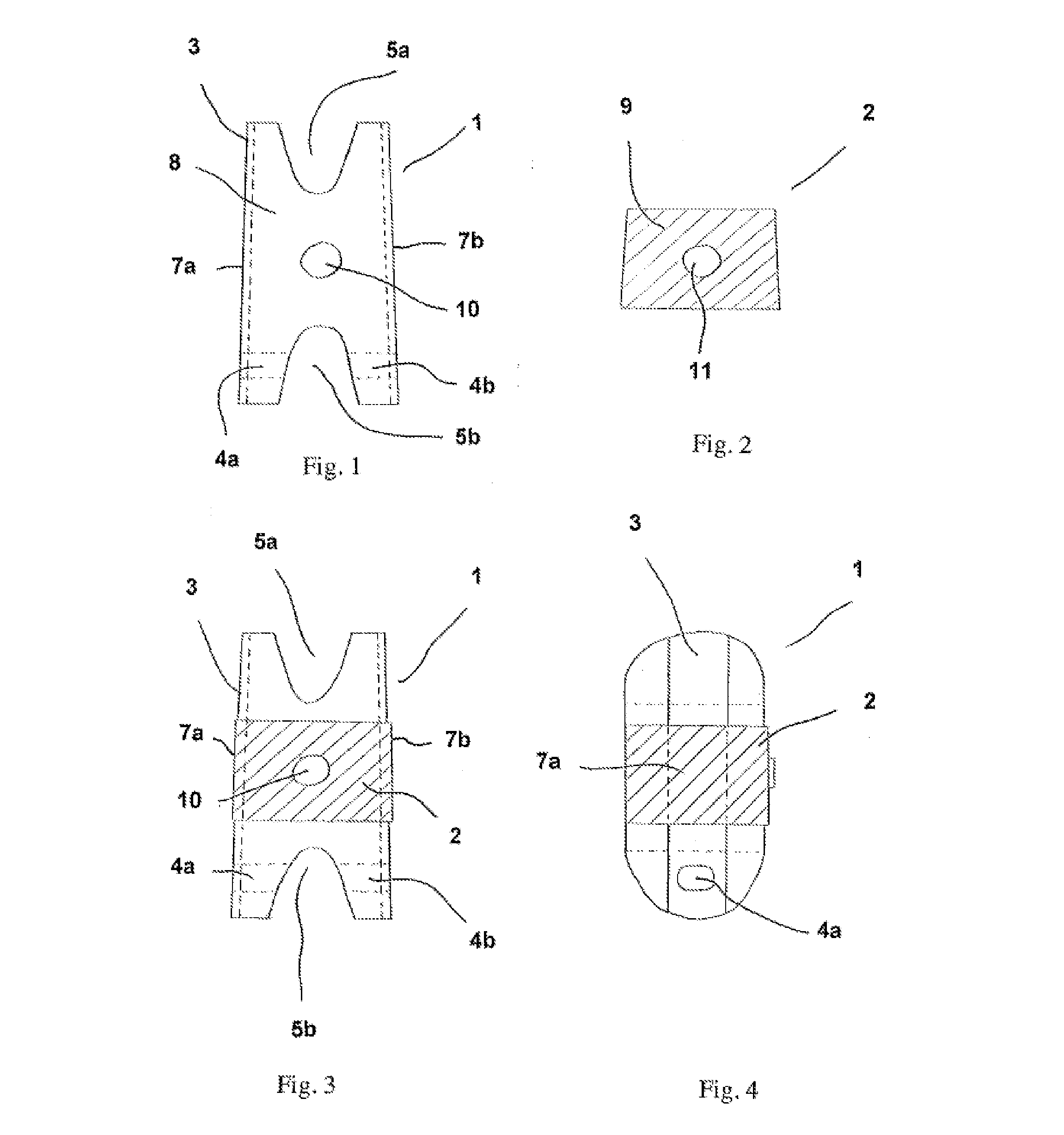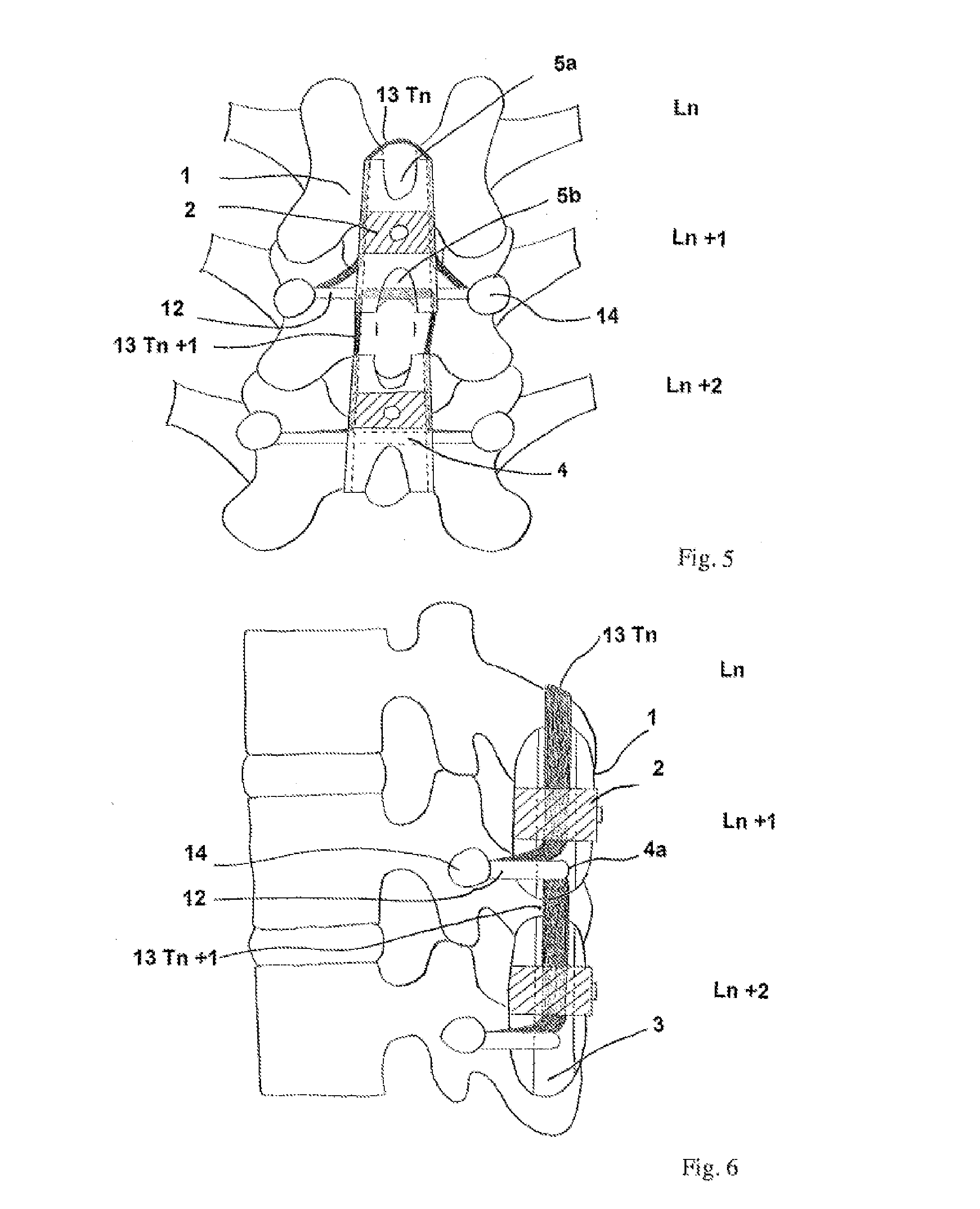Intervertebral dynamic fixation implant
a dynamic fixation and intervertebral technology, applied in the field of spine implants, can solve the problems of severe disability, pain, overload at the junction, and discomfort of subjects suffering from these disorders, and achieve the effects of increasing the mobility of the spine, good vertebral anchorage, and effective and lasting stabilization
- Summary
- Abstract
- Description
- Claims
- Application Information
AI Technical Summary
Benefits of technology
Problems solved by technology
Method used
Image
Examples
Embodiment Construction
[0043]FIG. 1 shows an example of an intervertebral wedge 1 according to the invention, in a view of its back face 8. Shaped as a slightly conical X with a cranial width substantially less than its caudal width, it has two notches 5a and 5b in the cranial and caudal portions respectively. A hole 10 is provided at the center of the wedge to allow attaching the rigid strip 2. The material chosen in this example is PEEK.
[0044]FIG. 2 shows an example of a rigid strip 2 according to the invention, in a view of its back face 9. Having a shape complementary to the intervertebral wedge 1, it partly covers the back face 8 of the latter as well as part of the two lateral faces 7a and 7b. It also has a hole 11, positioned so as be superimposed over the hole 10 present in the intervertebral wedge 1 to allow screw attachment of the rigid strip 2. The material chosen in this example is a biocompatible metal.
[0045]FIG. 3 shows the intervertebral wedge 1 covered by the rigid strip 2 according to the...
PUM
 Login to View More
Login to View More Abstract
Description
Claims
Application Information
 Login to View More
Login to View More - R&D
- Intellectual Property
- Life Sciences
- Materials
- Tech Scout
- Unparalleled Data Quality
- Higher Quality Content
- 60% Fewer Hallucinations
Browse by: Latest US Patents, China's latest patents, Technical Efficacy Thesaurus, Application Domain, Technology Topic, Popular Technical Reports.
© 2025 PatSnap. All rights reserved.Legal|Privacy policy|Modern Slavery Act Transparency Statement|Sitemap|About US| Contact US: help@patsnap.com



